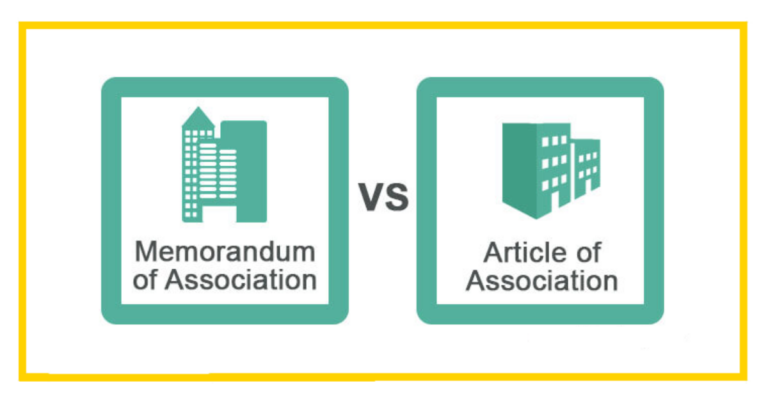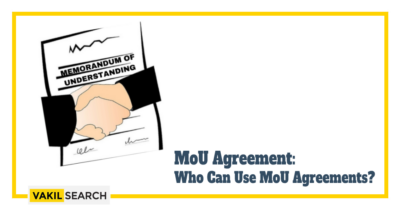Here we have stated the difference between MoU and Agreement in detail. Although the two are different, people confuse them for one another
A Memorandum of Understanding is the starting point for documenting any agreement reached between the parties involved in a commercial transaction. The memorandum of understanding comes before official agreements, and drafting those can be complex, especially in the case of massive deals. In its most straightforward sense, a memorandum refers to a non-formal written record of an agreement that has not yet been recognized as legally binding.
The Memorandum of Understanding is a stage that comes before the proper understanding that leads to an agreement to regulate future relationships. It is also sometimes referred to as a “Gentleman’s Agreement.” Even the signatories have a responsibility to have a solid grasp of the legal vocabulary, as the terms themselves may serve as the basis for future legal disputes.
For a document to be considered a legally enforceable contract, it must have all of the fundamental components of a contract, including an offer, acceptance, consideration, and the parties’ intention to be legally bound. In the context of international relations, memorandums of understanding belonging to the more general category of treaties.
Because many documents are not legally binding even though they were drafted by a lawyer and signed by the witnesses, it is essential to look over the document word for word. This is because many documents are not legally binding. Even while the two sorts of papers mentioned above can have substantial legal differences, there may be no legal or practical difference between them if they are written using comparable language.
The most important question is whether or not the parties intend to be legally bound by the agreement’s provisions. In this article, the author focuses on an aspect essential to comprehending the composition of the two documents.
Agreement
The parties’ goal is to bind themselves to each other according to the conditions of the agreement, which may contain suggestions and be contingent on their approval. Both parties intend to take legal action against one another if one breaches the agreement’s provisions and demands that it be completed.
In the event of a memorandum of understanding, both parties presented their intention and committed to continue following the sense in the future. It does not form a legitimate contract, but if one party does anything on the reliance of the MoU and sustains any loss, he can collect back the losses but cannot enforce the same. In other words, he can recoup the losses but cannot enforce the same.
The estoppels obligate both parties to the MoU, and neither can act in a manner that is inconsistent with them. For example, a memorandum of understanding can come in handy if we make a real estate purchase. Imagine that you have found a home you are interested in purchasing but will only be able to pay for it in six months.
During this interim period, you can make a modest advance payment and draft mou with the seller that outlines the terms and conditions from both parties’ perspectives. If you cannot complete the final payment on the house within six months, the property owner might stipulate in the contract that he has the right to cancel the down payment and sell it to another buyer. You will, however, want a more solid, legally binding document when six months have passed and the sale has taken place.
Memorandum of Understanding
An agreement is a legally binding contract that is created once all of the terms of a deal have been ironed out and agreed upon. Memorandum of Understanding is he full form of MOU.
In reality, a Memorandum of Understanding is nothing more than a method for two parties to agree with one another. It does not provide either of the parties involved in the transaction any rights, but it is used to determine the intentions of the parties involved in the trade before a real deal is made between them. Therefore, there are some circumstances where it would make more sense to go with a less stringent, non-legal document rather than one legally binding one.
Click here to know about: MoU for Business
The terms of the memorandum of understanding outline the expectations that have been mutually agreed upon between any number of individuals or organizations who are working together toward a common goal. For instance, two organizations that share a similar mission could use a memorandum of understanding to formalize their agreement to collaborate on resolving an issue or to support one another’s efforts.
The memorandum of understanding is essentially just a formal handshake. In the legal system of the United States, a Memorandum of Understanding is the same thing as a Letter of Intent (LoI), which is a non-binding written agreement that suggests a formal contract will follow. If the MOU is created with a monetary transaction in mind, it takes on the status of a legally binding document for all parties involved.
Comparison of an Agreement to a Memorandum of Understanding with Regards to Key Differences
Here is the difference between MOU and Agreement:
A deal is a contract in which two or more parties agree to work together for a common goal.
- A memorandum of understanding contains the components of an offer, acceptance, intention, and consideration, whereas an agreement includes the elements of an offer and acceptance.
- In contrast, the Memorandum of Understanding is a written document that outlines the conditions of an agreement and is separate from the agreement itself.
- The most fundamental distinction between an Agreement and an MoU is that the former can be made enforceable in a court of law, but the latter cannot, but the parties are still bound by estoppel. An agreement can be made enforceable in a court of law.
- An Agreement is legally binding on the parties, whereas a Memorandum of Understanding is only legally binding on the parties if it is signed in exchange for financial consideration.
- The parties to the agreement possess collateral rights, whereas the parties to the memorandum of understanding do not own collateral rights.
- An agreement may be inferred, but a memorandum of understanding may never be inferred.
Conclusion:
Difference between memorandum of understanding and agreement is made clear in this bog. If you want to know more about the memorandum and agreement, and want to get it made, you would need legal support. Get in touch with the professionals at Vakilsearch for the same.
Also read,











